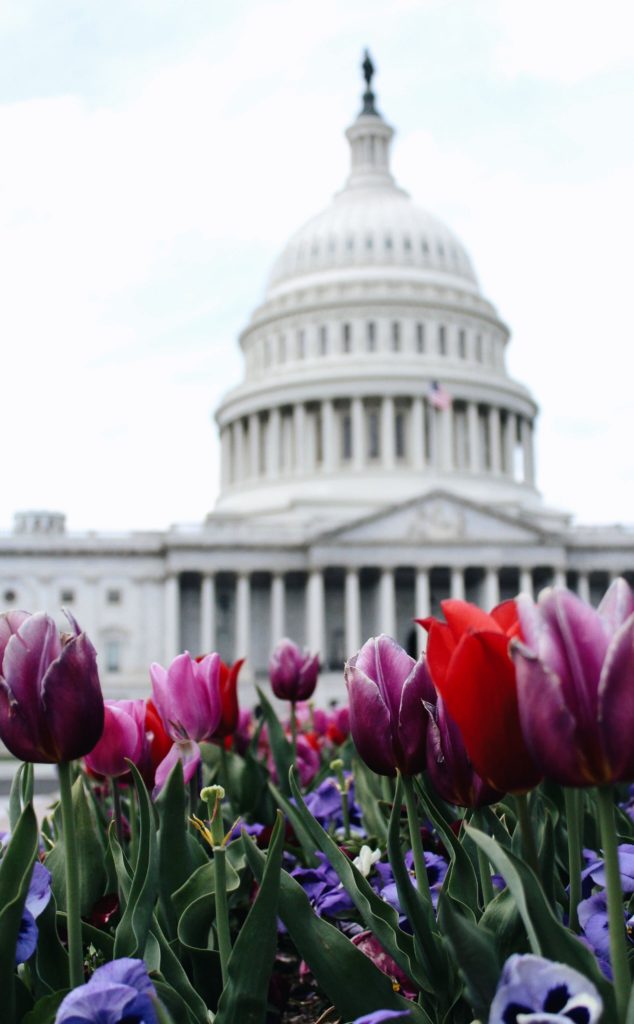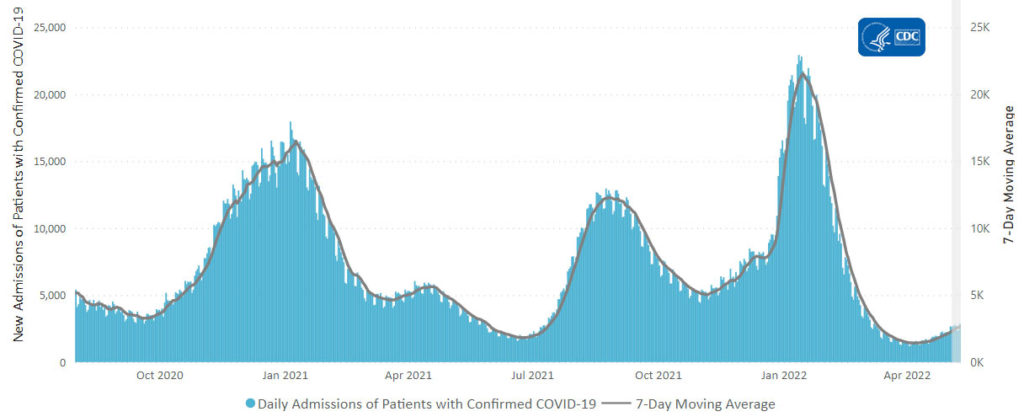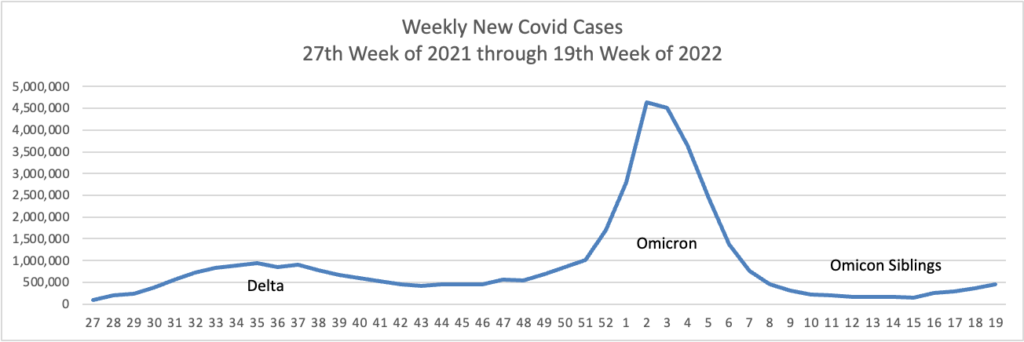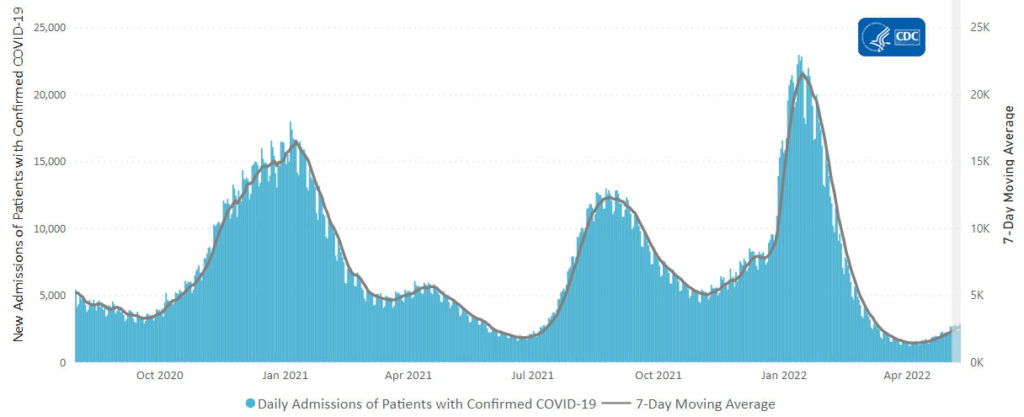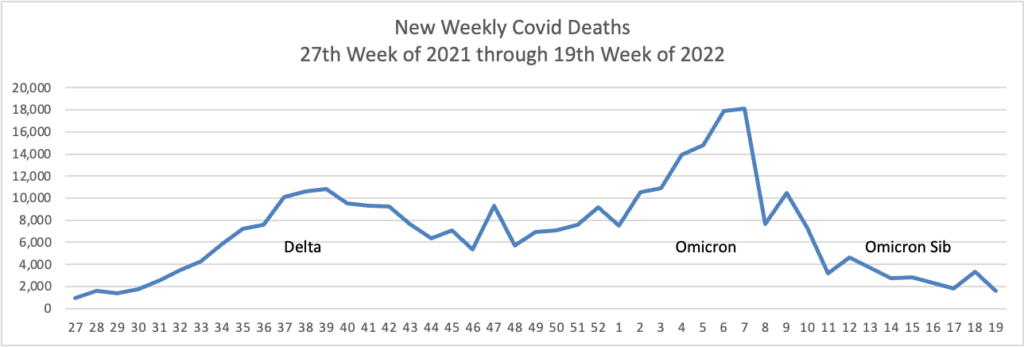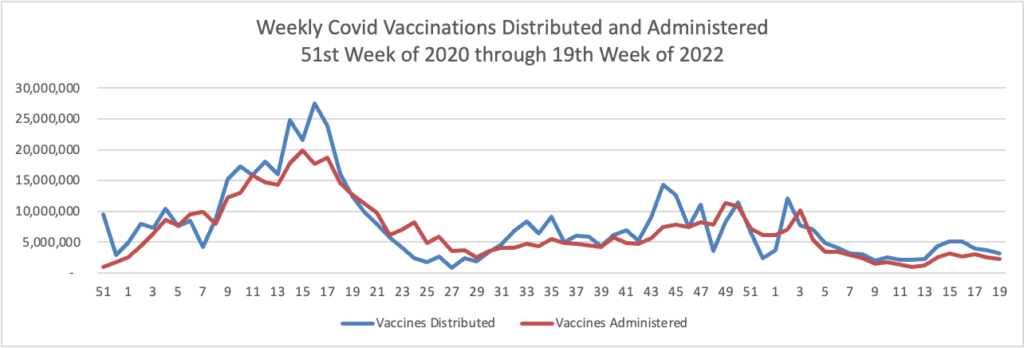Monday Roundup

From Capitol Hill, the Hill provides a useful outline of scheduled Congressional activities for this week.
From the Omicron and siblings front,
Becker’s Hospital Review reports
BA.2.75 is the latest omicron relative catching experts’ attention, with three cases recently identified on the West Coast, Time reported July 11.
Two cases were detected in California and one in Washington as of July 8, according to data from Helix, which works with the CDC on viral surveillance.
The subvariant is gaining traction in India and has also been detected in 10 other countries.
Better start looking over your shoulders Omicron subvariants BA.4 and BA.5.
The Wall Street Journal informs us
Moderna Inc. said it is developing two potential Covid-19 booster shots targeting different Omicron subvariants, citing differences in market preferences among the U.S. and other countries.
The Cambridge, Mass., company said Monday it has completed requests for regulatory authorization of one of its new booster shots in the European Union, the U.K. and Australia. The company expects to complete regulatory filings elsewhere this week.
In these countries, Moderna is seeking authorization for the use of mRNA-1273.214, a vaccine that targets both the ancestral strain of the coronavirus and the BA.1 subvariant of Omicron. The BA.1 subvariant was predominant earlier in the year but has been largely displaced by other Omicron subvariants in many countries.
In the U.S., however, Moderna will develop a different dual-target booster, mRNA-1273.222, which goes after both the ancestral strain and the BA.4 and BA.5 subvariants of Omicron. These subvariants, which are nearly identical to each other for the purposes of a vaccine, now account for most new cases of Covid-19 in the U.S.
What about BA.2.75?
An announcement from HHS today points to an FDA emergency use authorization of the traditionally developed Novovax in the near future.
The U.S. Department of Health and Human Services (HHS), in collaboration with the Department of Defense (DOD), today announced that it has secured 3.2 million doses of Novavax’s COVID-19 vaccine. The protein-based, adjuvanted vaccine will be made available for free to states, jurisdictions, federal pharmacy partners, and federally qualified health centers if it receives U.S. Food and Drug Administration (FDA) Emergency Use Authorization (EUA), and recommendation from the Centers for Disease Control and Prevention (CDC). The company is expected to complete all necessary quality testing in the next few weeks, which would support final release of the product.
Medscape tells us
Treatment with oral sabizabulin (Veru Pharmaceuticals) cut the risk for death by more than 55% in hospitalized patients with COVID-19, an interim analysis of a phase 3 placebo-controlled trial found.
Sabizabulin treatment consistently and significantly reduced deaths across patient subgroups “regardless of standard of care treatment received, baseline WHO scores, age, comorbidities, vaccination status, COVID-19 variant, or geography,” study investigator Mitchell Steiner, MD, chairman, president, and CEO of Veru, said in a news release.
The company has submitted an emergency use authorization request to the US Food and Drug Administration to use sabizabulin to treat COVID-19.
The analysis was published online July 6 in NEJM Evidence.
Sabizabulin, originally developed to treat metastatic castration-resistant prostate cancer, is a novel, investigational, oral microtubule disruptor with dual antiviral and anti-inflammatory activities. Given the drug’s mechanism, researchers at Veru thought that sabizabulin could help treat lung inflammation in patients with COVID-19 as well.
Benefits Pro calls to our attention health plan stop-loss insurer Sun Life’s top 10 high-cost claim conditions report.
Sun Life’s latest report saw a 354% increase in the number of COVID-19 claims from 2020 to 2021 [the Delta variant] —specifically, 107 claims to 486 claims. Total spend also rose from $30.4M to $114.0M, although the average cost for treatment went from $283.7K to $231.2K over the same period, amounting to an 18% decrease. Even so, COVID-19 landed (“somewhat ironically,” the study stated) at number 19 on Sun Life’s top 20 list of high-cost claim conditions over four years. This is significant, as every other condition on the list has amassed four years worth of claims to COVID’s two, underlining the severity of the pandemic.
From the Rx coverage front, Fierce Pharma reports
Two manufacturers of contraceptive pills have been jockeying for FDA clearance to sell their medications over the counter for more than half a decade. Now, against the backdrop of an intense debate over reproductive rights, one of those drugmakers is officially in the running for an approval.
HRA Pharma has applied to the FDA for approval of what could be the first over-the-counter birth control pill in the U.S., the Perrigo-owned company said Monday. The move comes shortly after the Supreme Court’s decision to overturn Roe v. Wade, which has ignited a nationwide clash over reproductive rights.
HRA’s application specifically seeks to convert the prescription approval for the so-called mini pill or non-estrogen pill, dubbed Opill, into an over-the-counter approval.
At the same time, Cadence Health, another maker of birth control pills that’s been in talks with the FDA about converting its med’s approval into an over-the-counter one, said it hopes to move closer to submitting its application in the coming year, The New York Times reports.
FDA approval of OTC contraceptives should have been approved years ago, in the FEHBlog’s opinion.
From the SDOH front, Health Payer Intelligence informs us
The Association for Community Affiliated Plans (ACAP) has initiated a center designed to spur new ideas about how to address social determinants of health, according to a press release that HealthPayerIntelligence received by email.
“Longstanding racial inequities cannot improve without meaningfully addressing the social factors underlying them,” Margaret A. Murray, chief executive officer of ACAP, shared in the press release.
“Safety Net Health Plans have worked in communities across the United States to address factors that shape their members’ health for decades. This new center creates unique opportunities to showcase what works, share that knowledge with others, and support a healthier future for people with low incomes, whose wellbeing has too often been held back by their environment.”
Bravo.
The Wall Street Journal reminds us that the new three-digit 988 suicide hotline launches on Saturday, July 16.
Health officials preparing to broaden the reach of a national mental-health crisis line are working to strengthen an overstretched network of call centers that didn’t connect with about one in six callers in recent years, a Wall Street Journal data review showed.
The National Suicide Prevention Lifeline will transition on July 16 to a three-digit number for calls and texts, 988, from a 10-digit number that has operated since 2005 in coordination with local crisis centers. The line’s operators, including the Substance Abuse and Mental Health Services Administration and the nonprofit Vibrant Emotional Health, said they expect an increase in calls to the shorter and more memorable 988 number during the next year. Stress, suffering and disruption of routines during the pandemic has worsened many people’s mental health, clinicians have said.
Fingers crossed for this important initiative.




